Trees are extremely beneficial to any property.
They provide shade, freshen the air in your area, attract wildlife such as good insects, butterflies, bees, squirrels and birds, and of course, make a great addition to your yard.
Especially those that bloom in purple, lavender, lilac, or violet in color.
For this article, we are going to talk about the 11 types of trees with purple flowers.

Table of Contents
1. Crepe Myrtle (Lagerstroemia)
Commonly used in domestic and commercial landscapes, the crepe myrtle is native to the Indian subcontinent, southeast Asia, northern Australia, and some areas of Oceania.
It is known for its vibrant and long-lasting flowers that bloom every summer and fall.
Purple is the most common and most popular flower color, though it may also come in red, pink, and white.
This tree varies in height, from below one foot to over 100 feet. However, all species are woody in nature and have an attractive winter bark.
It is highly suggested to cultivate Crepe Myrtle in warm southern climate, zones seven through nine. Its purple flower attracts hummingbirds in the area.
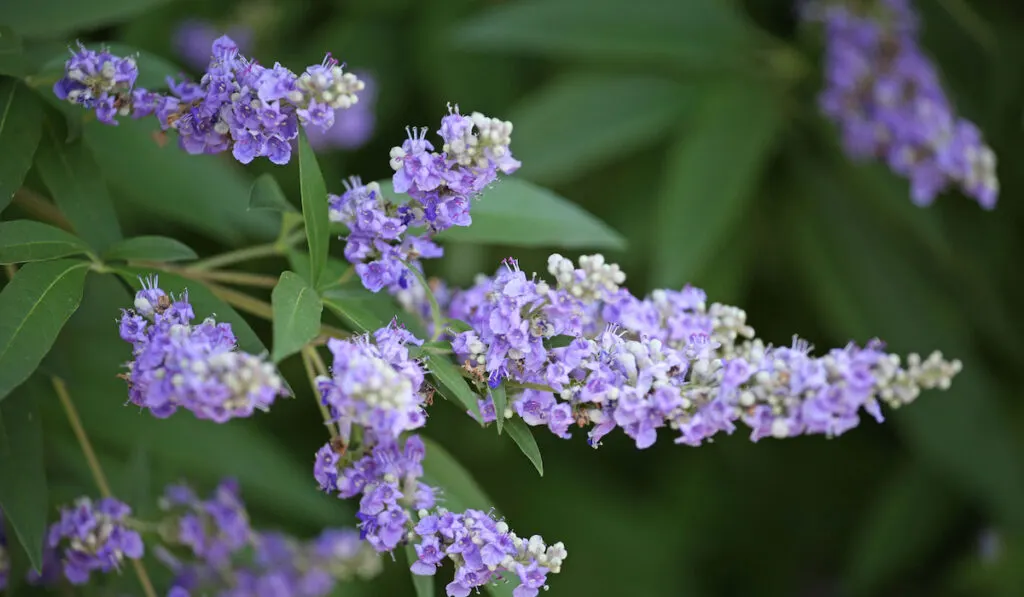
2. Chaste Tree (Vitex agnus-castus)
Because it is a low-growing tree, the chaste tree looks like a shrub which bears purple, or blue flowers.
This tree is low maintenance, and grows between four and 15 feet.
It is native to Mediterranean regions, and can grow well on dry, sandy, and even rocky soils.
Chaste Tree blooms in late summer until the start of fall, usually after most shrubs finish their display.
It can be grown between zones six and nine, though it is considered hardy at about minus nine degrees Fahrenheit.
Usually, this tree is used in shrub borders, on butterfly gardens since butterflies and other pollinators love the blooms of this tree.
3. Jacaranda Tree (Jacaranda mimosifolia)
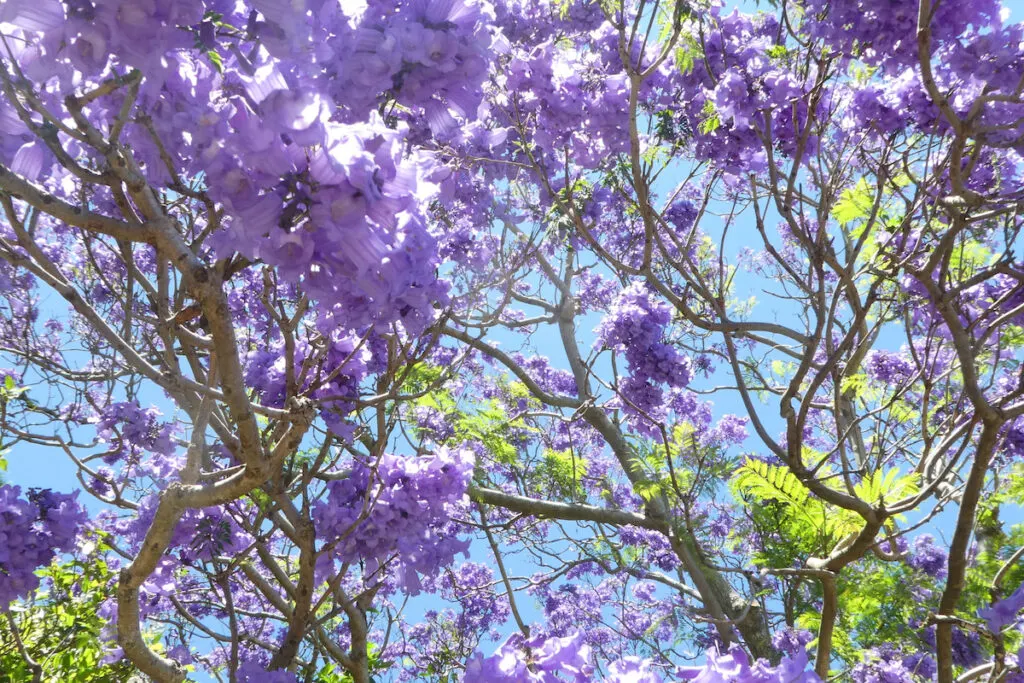
Jacaranda Tree is native to sub-tropical areas, but they can now be seen all over the world due to their lovely, fragrant, and trumpet-shaped flowers.
It is a large tree, and when planted in the right climate, it makes a great shade and street tree.
That said, it requires plenty of space if you decide to have one in your backyard. It can grow up to 66 feet, and is usually in bloom during late spring and early summer, although it can flower any time in warmer climates.
Jacaranda tree thrives in zones nine b through 11. Its hardiness is evaluated when the temperature goes down to below 15 degrees Fahrenheit.
Although it can bear the occasional cold, this tree prefers an area with lots of sun and humidity.
4. ‘Purple Robe’ Locust (Robinia pseudoacacia ‘Purple Robe’)

This fast-growing, mid-sized ornamental flowering tree can survive the most difficult situations in different areas.
An improvement of the Black Locust Tree, the fragrant ‘Purple Robe’ Locust can grow from 30 to 50 feet tall.
Its Wisteria-like purple flowers can be seen during spring which attracts bees living around the area.
It grows well in USDA zones four through eight.
It is capable of growing on all types of soil, although you should avoid planting them in areas which often flood as this tree cannot tolerate standing water.
While this tree can provide excellent shade, its branches have sharp thorns, so be careful when handling them.
5. Purple Orchid Tree (Bauhinia Purpurea)
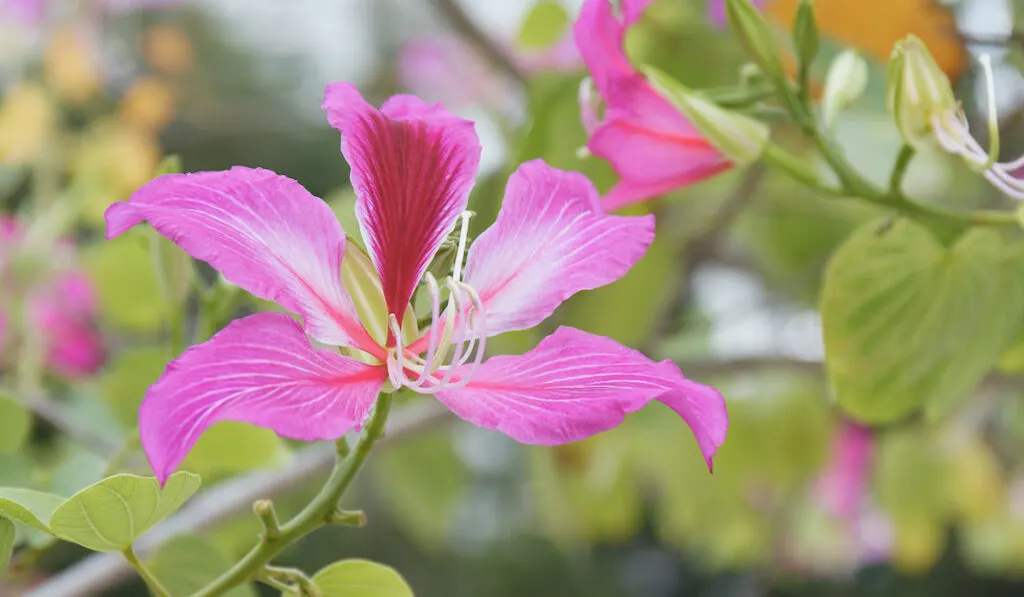
The purple orchid tree is a tropical, evergreen tree that is native to the Indian subcontinent and Myanmar.
It stands up to 17 feet tall, and can grow in USDA zones nine b through 11.
Its flowers can be seen from summer to winter, and can live well in loam or sandy soil with a partial shade, or full sun.
This tree can be used on streets without sidewalks, on your lawn and patio, at parking lots, or as a highway median.
6. Fragrant Lilac (Syringa vulgaris)
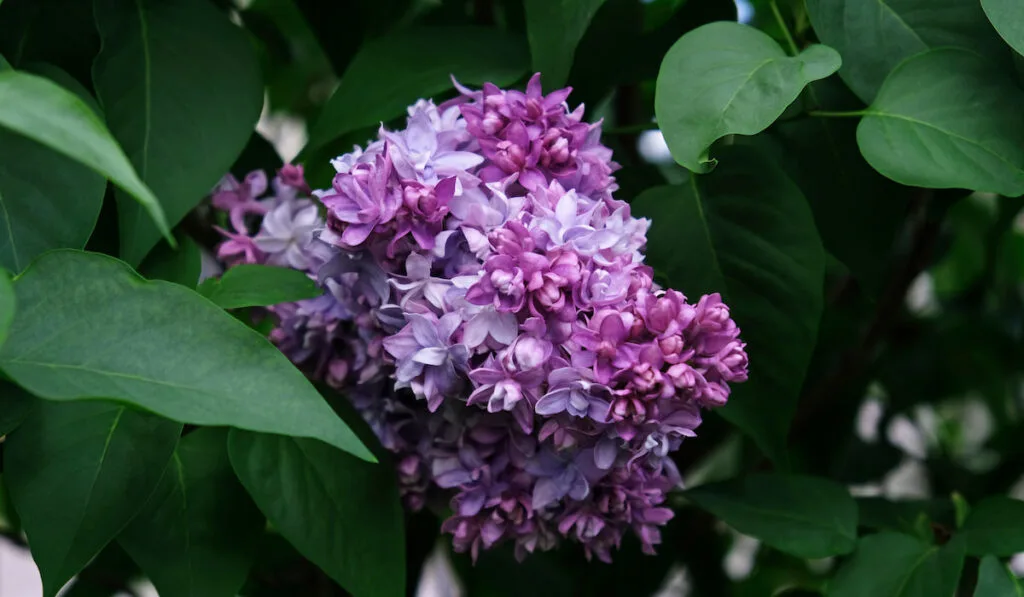
This extremely fragrant plant with majestic flowers is a native of Southeastern Europe and is a favorite among gardeners.
It blooms in April or May with a long-lasting flower that is lilac, light purple, or lavender in color.
It grows well in hardiness zones three through seven under a full sun or partial shade.
Although it prefers sunny weather, fragrant lilacs cannot tolerate the hot, humid conditions.
It prefers well-drained soil that is either moist or sandy, with an acidic or alkaline pH.
The fragrant lilac’s aromatic flower attracts butterflies, as well as provides food for caterpillars.
Not only that, it also offers cover for birds and butterflies.
7. Purple Lily Magnolia (Magnolia liliflora)

This deciduous flowering shrub or small tree is native to China and Japan. It blossoms every spring, with six to seven petals for each flower.
Sometimes, the flowers can have follicles – a cone-shaped purple or brown fruit.
The hardiness zones for Purple Lily Magnolia are five through ten, depending on the variety.
This small tree stands between eight and 12 feet tall, and grows well in rich, moist, slightly acidic, and well-drained soil.
To properly grow Purple Lily Magnolia, place it where it will be protected from strong winds, but also in a place where it is not likely to get artificial warmth.
This may cause the buds to open too early.
8. Desert Willow (Chilopsis linearis)

This little, fast-growing tree is native to the southwestern United States and northern Mexico.
Despite its name, the Desert Willow is not from the willow family.
This large shrub only grows to a maximum of 30 feet, which means it can be planted even in homes with small backyards.
The desert willow usually blooms from May to September.
This tree with trumpet-like flowers is easily grown in USDA hardiness zones seven b through 11.
If you prefer to use plants as a windbreak or privacy screen, then Desert Willow is your best friend.
Aside from providing shade and aromatic scent to your backyard, Desert Willows also attract hummingbirds, bees, and other types of birds.
9. Royal Purple Smoke Tree

The Royal Purple Smoke Tree presents beauty and power because of its smoke-like purple blooms and its ability to survive on almost all soil types, so long as the soil is well-drained.
It blooms during summer, and grows up to 15 feet tall. Because of its exquisite color, the Royal Purple Smoke Tree makes a great addition to any garden.
Its growing zones are four through eight under the full sun.
10. Royal Empress Tree (Paulownia Tomentosa)

Despite being the world’s fastest growing shade tree, the Royal Empress Tree is a non-aggressive root system which is common to most fast-growing trees.
Usually blooming in spring, this tree provides a sweet-scented flower.
Additionally, it is highly environmental. In fact, one tree can absorb up to 48 pounds of carbon dioxide a day, replacing it with a fresh, pure oxygen.
Growing up to 40 to 50 feet tall, the royal empress tree easily forms a dense canopy that greatly cuts utility costs.
It grows in zones seven through 11 outdoors, it is drought-tolerant, and it grows in almost all kinds of soil.
11. Korean Lilac Tree (Syringa meyeri ‘Palibin’)
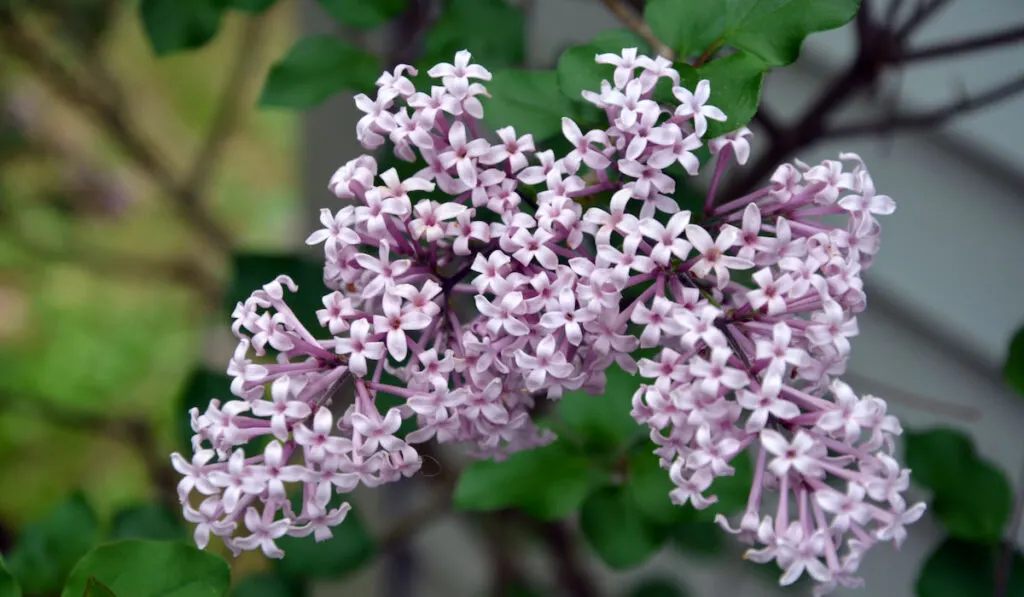
The Korean Lilac Tree gradually gained its popularity among lilac enthusiasts, avid gardeners, and landscape designers of luxurious neighborhoods.
It is known for being highly fragrant, especially during late spring when it blooms.
Being a low-maintenance tree, it is known as a patio shrub and makes a great accent in landscapes.
The Korean Lilac Tree grows between five and six feet tall under the full sun, with growing zones from three through seven.
If you plan on adding one or more of these trees in your garden, make sure you consider the space you have and the climate you are in.
Final Thoughts
There are many trees to choose from when deciding how to landscape your yard.
Purple is an excellent choice for livening up your area and making your space even more aesthetically pleasing.
There are many choices, now you just have to decide which one is perfect for you.
If you found this list helpful, or you know someone who might need to read this, you are free to share this article with them!
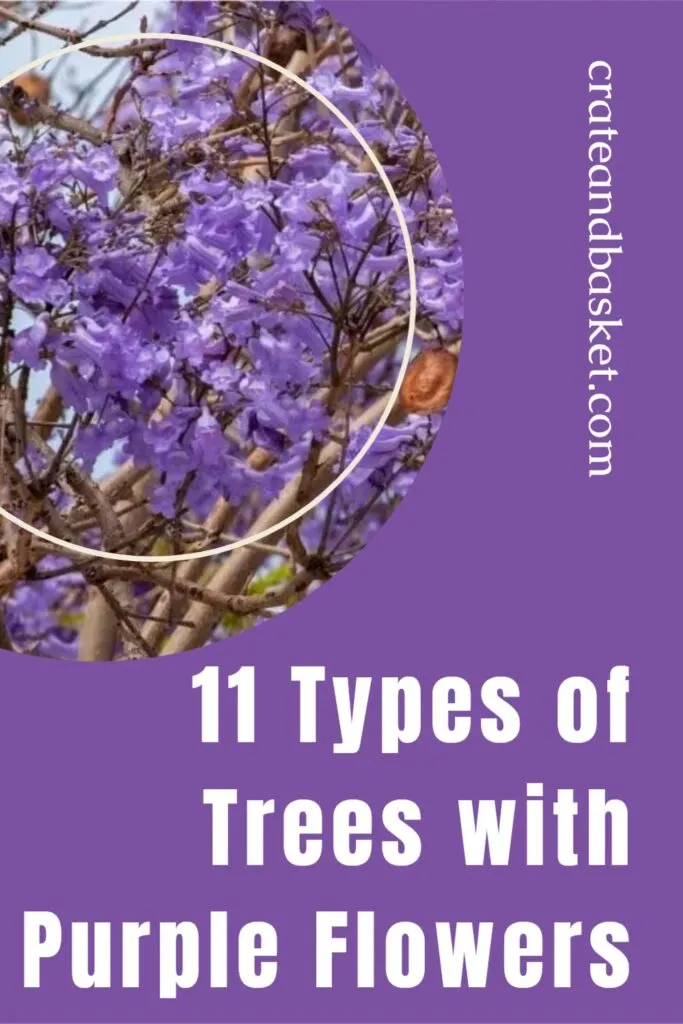
References:
- https://leafyplace.com/flowering-trees/
- https://homeguides.sfgate.com/ornamental-trees-big-leaves-beans-49398.html
- https://arbordayblog.org/landscapedesign/top-10-flowering-trees/
- https://www.gardenguides.com/114101-list-purple-flowering-trees.html
- https://www.fast-growing-trees.com/collections/trees-with-purple-flowers
- https://en.wikipedia.org/wiki/Lagerstroemia
- https://www.thespruce.com/chaste-tree-growing-profile-3269206
- https://www.gardeningknowhow.com/ornamental/trees/jacaranda/jacaranda-tree-information.htm
- https://en.wikipedia.org/wiki/Jacaranda_mimosifolia
- https://homeguides.sfgate.com/purple-robe-trees-67350.html
- https://edis.ifas.ufl.edu/st090
- https://www.arborday.org/trees/treeguide/TreeDetail.cfm?ItemID=856
- https://www.thespruce.com/growing-the-magnolia-iliflora-3269224
- https://www.gardeningknowhow.com/ornamental/trees/desert-willow/caring-for-desert-willow-trees.htm
- https://wateruseitwisely.com/desertwillow/
- https://www.monrovia.com/royal-purple-smoke-tree.html
- https://www.fast-growing-trees.com/products/royal-purple-smoke-tree
- https://www.gardeningknowhow.com/ornamental/trees/royal-empress/worlds-fastest-growing-shade-tree.htm
- https://www.fast-growing-trees.com/products/royal-empress-tree
- https://www.naturehills.com/dwarf-korean-lilac-tree-form
- https://www.fast-growing-trees.com/products/dwarf-korean-lilac-tree
